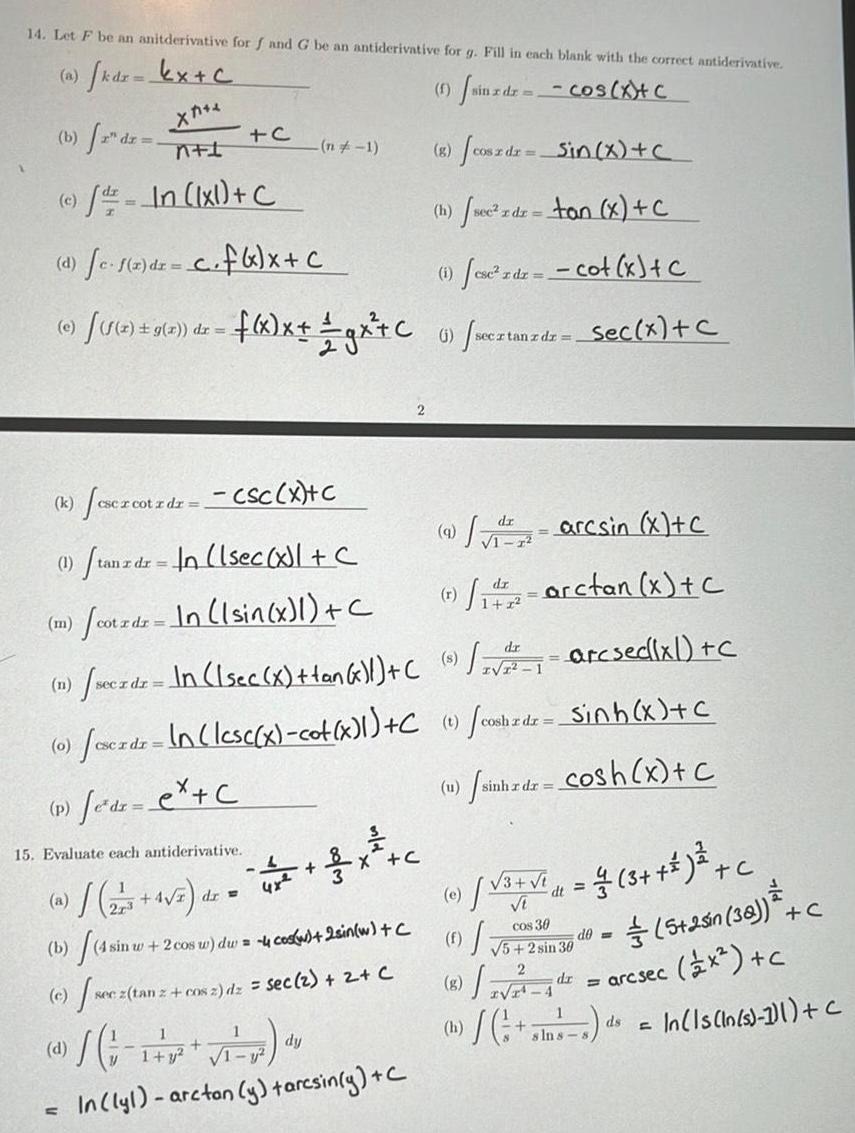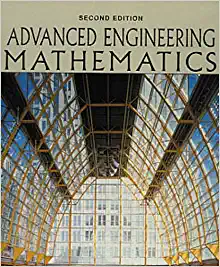Answered step by step
Verified Expert Solution
Question
1 Approved Answer
14. Let F be an anitderivative for f and G be an antiderivative for g. Fill in each blank with the correct antiderivative. (a)

14. Let F be an anitderivative for f and G be an antiderivative for g. Fill in each blank with the correct antiderivative. (a) fkdr=kx+c (f) sin z dr = cos(x)+C (b) [2" dr=. +C n+t (n-1) (g) cos z dr=sin(x)+c (c) = In (1x1)+C (d) fc-f(x) dr = c.fx)x+c dr (h)/sec zdr=tan (x)+c (1) csc z dz=-cot (x)+c (c) (F(x)=(x)) = f(x)x+x+C 0) = sec(x)+c (j) secrtan z dr= 2 (k) cscr cotr dr=-CSC (x)+c (1) tanz drn (sec(x)/+C (m) fcot z dr = In (1sin(x)1) + (q) @ / L - arcsin (x)+C (r) / 142 = arctan (x)+c == In (\sec (X) +tan (x)1) + C( (n) [secr dr= 1+22 dr -arcsedlx)+c (0) / scr dr-In (lcsc(x)-cot (x)1) +C (1)/dz-Sinh (x)+c (p) Jedr=x+C 15. Evaluate each antiderivative. (*)(+42) de (b) (4 sin w (c) c) / see dr = 4x2 w+2cos w) dw-4 cos(w)+2sin(w) +C sec z(tan z + cos z) dz = sec (2) + 2+ C 1 (d) + dy 1+y2 dr= (u) sinhdr=cosh (x) + 3+ (0) += (3++)+C dt (f) cos 30 5+2 sin 30 de 2 (8) dr (5+250 (38))*+c = arcsec (1)/(0. 1 + ds slns-s = (x2)+c In (Is (In(s)-1))+c = In (lyl)-arcton (y) tarcsinly) +C
Step by Step Solution
There are 3 Steps involved in it
Step: 1

Get Instant Access to Expert-Tailored Solutions
See step-by-step solutions with expert insights and AI powered tools for academic success
Step: 2

Step: 3

Ace Your Homework with AI
Get the answers you need in no time with our AI-driven, step-by-step assistance
Get Started


